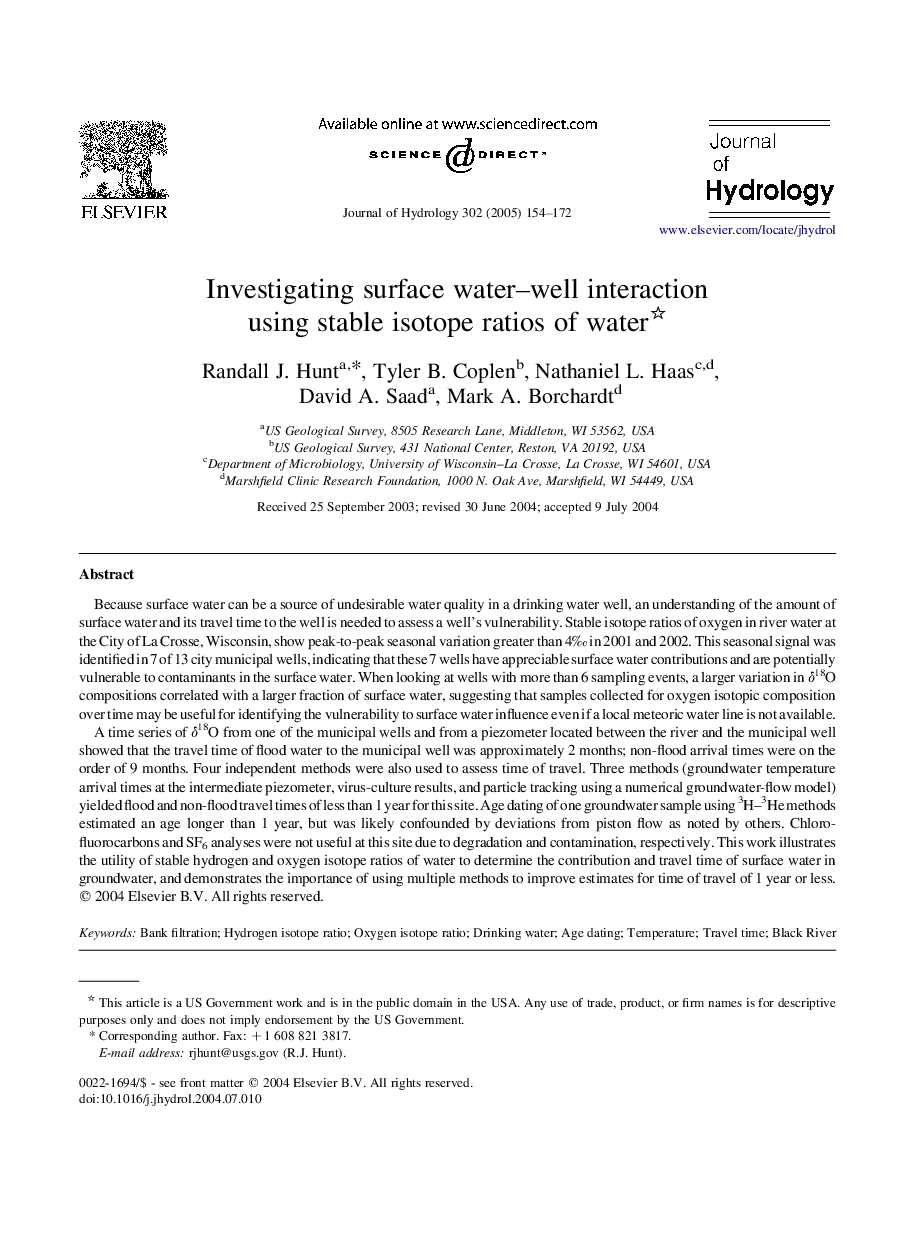| Article ID | Journal | Published Year | Pages | File Type |
|---|---|---|---|---|
| 9491434 | Journal of Hydrology | 2005 | 19 Pages |
Abstract
A time series of δ18O from one of the municipal wells and from a piezometer located between the river and the municipal well showed that the travel time of flood water to the municipal well was approximately 2 months; non-flood arrival times were on the order of 9 months. Four independent methods were also used to assess time of travel. Three methods (groundwater temperature arrival times at the intermediate piezometer, virus-culture results, and particle tracking using a numerical groundwater-flow model) yielded flood and non-flood travel times of less than 1 year for this site. Age dating of one groundwater sample using 3H-3He methods estimated an age longer than 1 year, but was likely confounded by deviations from piston flow as noted by others. Chlorofluorocarbons and SF6 analyses were not useful at this site due to degradation and contamination, respectively. This work illustrates the utility of stable hydrogen and oxygen isotope ratios of water to determine the contribution and travel time of surface water in groundwater, and demonstrates the importance of using multiple methods to improve estimates for time of travel of 1 year or less.
Keywords
Related Topics
Physical Sciences and Engineering
Earth and Planetary Sciences
Earth-Surface Processes
Authors
Randall J. Hunt, Tyler B. Coplen, Nathaniel L. Haas, David A. Saad, Mark A. Borchardt,
